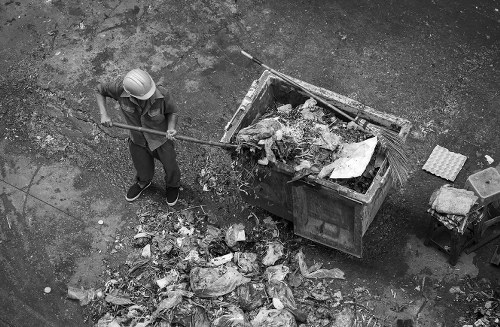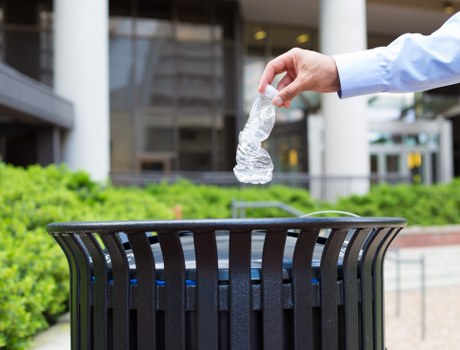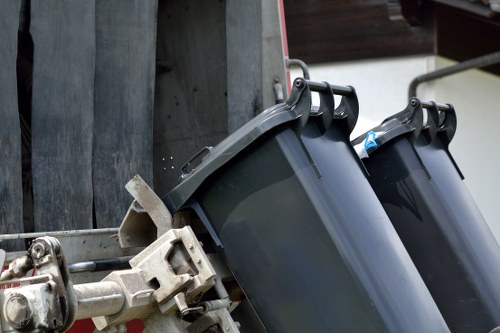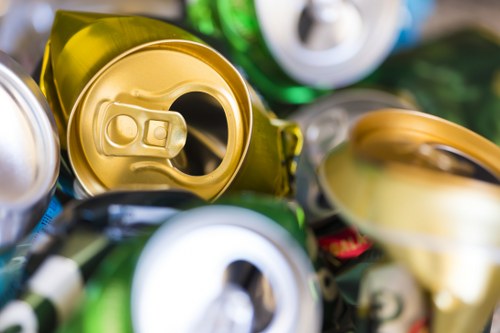Builders Waste Clearance in Rubbish Junk

The Importance of Builders Waste Clearance
In the construction industry, managing builders waste clearance is a critical aspect that ensures projects run smoothly and sustainably. Proper waste clearance not only maintains site safety but also contributes to environmental conservation. Whether you’re undertaking a small renovation or a large-scale construction project, effective rubbish junk management is indispensable.
Builders generate a significant amount of waste, ranging from concrete, wood, metals, to packaging materials. Without efficient clearance systems in place, this waste can accumulate, leading to increased costs, project delays, and potential legal issues. By prioritizing waste management, builders can ensure compliance with local regulations and promote a cleaner, safer working environment.
Moreover, responsible waste clearance practices enhance a company's reputation. Clients and stakeholders are increasingly valuing sustainability and environmental responsibility. Demonstrating a commitment to proper waste disposal can set a business apart from competitors and attract eco-conscious clients.

Types of Building Waste
Understanding the various types of builders waste is essential for effective clearance and recycling. The most common categories include:
- Concrete and Cement: Often a major component of construction waste, these materials require specialized disposal methods.
- Wood and Timber: Includes offcuts, pallets, and untreated wood used in construction.
- Metals: Such as steel beams, aluminum, and copper wiring, which are highly recyclable.
- Plastics: Various types used in piping, insulation, and packaging.
- Glass: Windows, mirrors, and other glass components need careful handling to prevent breakage.
Proper segregation of these materials at the construction site facilitates efficient recycling and reduces the volume of waste requiring disposal. Implementing a waste management plan that categorizes and handles each type appropriately is crucial for effective rubbish junk clearance.
Additionally, hazardous materials such as asbestos or lead-based paints require specialized handling and disposal protocols. Engaging professionals for the clearance of such materials ensures compliance with safety standards and environmental regulations.

Environmental Impact of Improper Waste Disposal
Improper disposal of construction waste can have severe environmental repercussions. Non-recycled waste contributes to landfill overflow, exacerbating pollution and greenhouse gas emissions. Materials like concrete and metals take up valuable landfill space, while organic waste can decompose anaerobically, releasing methane—a potent greenhouse gas.
Furthermore, improper waste disposal can contaminate soil and waterways. Leachate from landfills can seep into the ground, affecting local ecosystems and potentially entering the human water supply. This not only harms wildlife but also poses health risks to nearby communities.
By ensuring proper builders waste clearance, the construction industry can significantly mitigate its environmental footprint. Recycling materials reduces the demand for new resources, conserving natural habitats and minimizing energy consumption associated with manufacturing new products. Sustainable waste management practices are essential for fostering long-term environmental health.

Choosing the Right Rubbish Junk Clearance Service
Factors to Consider
Selecting a reliable rubbish junk clearance service is paramount for effective waste management. Here are key factors to consider:
- Experience and Expertise: Choose a service with a proven track record in handling construction waste. Experienced professionals are better equipped to manage diverse waste types safely and efficiently.
- Compliance with Regulations: Ensure the service adheres to local waste disposal regulations and has the necessary licenses and certifications.
- Recycling Capabilities: Opt for companies that prioritize recycling and have partnerships with recycling facilities to minimize landfill use.
- Flexibility and Availability: The service should accommodate your project’s schedule and volume requirements, offering timely and scalable solutions.
- Transparent Pricing: Look for services that provide clear, upfront pricing with no hidden fees, ensuring you stay within budget.
By carefully evaluating these factors, builders can select a rubbish junk clearance service that aligns with their project needs and sustainability goals. A dependable service provider not only ensures efficient waste management but also contributes to the overall success of the construction project.
Additionally, reading reviews and seeking recommendations can provide insights into a company’s reliability and customer service quality. Building strong partnerships with waste clearance providers fosters a collaborative approach to sustainable construction practices.

Benefits of Professional Waste Clearance
Efficiency and Time Savings
Engaging professional builders waste clearance services offers significant efficiency gains. Experts have the necessary equipment and expertise to handle large volumes of waste swiftly, reducing downtime and keeping projects on schedule. Timely waste removal prevents cluttered sites, enhancing workplace safety and productivity.
Moreover, professionals streamline the clearance process, handling everything from waste identification and segregation to transportation and disposal. This allows builders to focus on core activities without the distraction of managing waste logistics.
Cost-Effectiveness
While there is an upfront cost associated with hiring professional services, the long-term savings are substantial. Efficient waste management reduces the need for on-site storage, lowers labor costs, and minimizes potential fines from non-compliance with disposal regulations. Additionally, recycling materials can offset some costs through resale or reduced disposal fees.
Professional services also help in avoiding hidden costs such as damage to property or equipment during waste handling, which can be mitigated through experienced handling practices.
Enhanced Safety
Handling construction waste can pose safety risks, including exposure to hazardous materials and physical injuries from improper handling. Professional clearance services are trained to manage these risks effectively, ensuring that waste is handled and disposed of safely. This not only protects workers but also preserves the integrity of the construction site.
By adhering to safety protocols and utilizing appropriate protective gear, professionals minimize accidents and health hazards associated with waste management, fostering a safer working environment.
Process of Builders Waste Clearance
Assessment and Planning
The first step in effective builders waste clearance is a comprehensive assessment of the waste generated. This involves identifying the types and quantities of waste, as well as understanding the project’s specific requirements. A well-thought-out plan ensures that all waste is managed efficiently and in compliance with regulations.
Planning also includes scheduling waste removal to coincide with different phases of the construction project, preventing accumulation and maintaining site organization. Tailored plans cater to the unique needs of each project, enhancing overall efficiency.
Segregation and Recycling
Proper segregation is crucial for effective waste management. Separating recyclable materials from non-recyclable waste facilitates easier processing and reduces the burden on landfills. Materials such as metals, plastics, and wood should be sorted and directed towards appropriate recycling streams.
Implementing on-site segregation practices ensures that waste is managed at the source, simplifying the clearance process. Collaboration with recycling facilities further enhances the sustainability of waste management practices, contributing to environmental conservation.
Transportation and Disposal
Once waste is segregated, it must be transported to designated disposal or recycling facilities. Professional clearance services utilize specialized vehicles and equipment to handle the transportation safely and efficiently. Proper handling during transportation prevents spillage, contamination, and damage to materials.
Selecting the right disposal facilities ensures that waste is processed in an environmentally responsible manner. Compliance with transportation regulations and adherence to safety standards are paramount in this stage, maintaining the integrity of the waste management process.
Cost Factors and Pricing
Understanding the cost factors associated with builders waste clearance helps in budgeting and financial planning for construction projects. Several elements influence the pricing of rubbish junk removal services:
- Volume of Waste: The amount of waste generated directly impacts the cost. Larger volumes require more resources for collection, transportation, and disposal.
- Type of Waste: Hazardous or specialized waste may incur higher disposal fees due to the need for special handling and processing.
- Frequency of Clearance: Regular clearance schedules can be more cost-effective compared to one-time services, offering discounts for ongoing contracts.
- Location: Proximity to disposal facilities and the construction site affects transportation costs. Remote locations may incur additional charges.
- Service Provider: Different companies offer varying pricing structures based on their expertise, equipment, and service quality.
Transparent pricing models and detailed quotes from service providers help in making informed decisions. It’s essential to consider both the upfront costs and the long-term benefits of professional waste clearance to determine the most cost-effective solution for your project.
Negotiating contracts and understanding the breakdown of costs can further optimize budget allocation, ensuring that waste management does not strain project finances.
Sustainable Practices in Waste Management
Recycling and Reuse
Adopting sustainable practices in builders waste clearance significantly reduces the environmental impact of construction projects. Recycling materials like metals, wood, and plastics conserves natural resources and minimizes the waste sent to landfills. Reusing materials, such as bricks and timber, extends their lifecycle and reduces the demand for new resources.
Collaborating with recycling facilities and incorporating recycled materials into new projects fosters a circular economy, promoting sustainability within the construction industry.
Energy Efficiency
Implementing energy-efficient waste management practices lowers the carbon footprint of construction projects. Using eco-friendly transportation for waste removal and minimizing energy consumption during processing contribute to overall sustainability goals.
Additionally, optimizing logistics and reducing unnecessary movements in the clearance process enhances energy efficiency, leading to cost savings and environmental benefits.
Compliance and Certification
Ensuring compliance with environmental regulations is a cornerstone of sustainable waste management. Obtaining certifications from recognized bodies demonstrates a commitment to responsible waste practices and enhances credibility with clients and stakeholders.
Regular audits and assessments help maintain high standards in waste management, identifying areas for improvement and ensuring ongoing compliance with evolving environmental laws.
Conclusion
Effective builders waste clearance in rubbish junk is an essential component of successful and sustainable construction projects. By prioritizing proper waste management, builders can ensure site safety, environmental protection, and cost efficiency. Choosing the right clearance service, understanding cost factors, and adopting sustainable practices are crucial steps towards achieving these goals.
Investing in professional waste clearance not only enhances project outcomes but also contributes to a greener, more responsible construction industry. Contact us today to learn how our expert rubbish junk clearance services can support your next building project.



